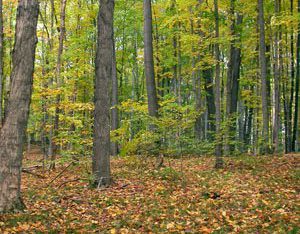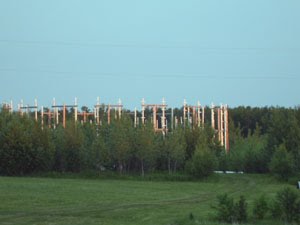Collaborators
Inés Ibáñez & Donald Zak, School of Environment and Sustainability, University of Michigan, Ann Arbor, MI
Summary
Forests have the capacity to mitigate global warming by absorbing carbon dioxide from the atmosphere and storing it in plant tissues. However, plant uptake of carbon dioxide is controlled by the availability of other resources, like nitrogen, an element essential in photosynthesis. Because the supply of nitrogen is limited in most forests, trees could be prevented from reaching their maximum carbon uptake potential. Understanding how new mechanisms work for acquiring nitrogen, where it takes place in the landscape, and which trees benefit most, enables better predictions of forest carbon storage and more accurate quantification of climate mitigation potential of forests.
This project evaluates how trees potentially access nitrogen that is bound in soil organic matter using ectomycorrhizal fungi. Further, the project assesses how access to this additional nitrogen could increase net primary productivity, especially under elevated atmospheric carbon dioxide concentrations. The assumption that ectomycorrhizal fungi increase tree productivity has previously been untested under field conditions. This work directly investigates this mechanism through a field experiment along a nitrogen gradient as well as use results from Bayesian models to improve the accuracy of terrestrial biogeochemical models. This research investigates 1) the conditions under which organic nitrogen contributes to plant nutrition; 2) the magnitude of that contribution to tree growth; and 3) the effect of organic nitrogen on tree productivity under elevated atmospheric carbon dioxide concentrations.
Funding Source: National Science Foundation



